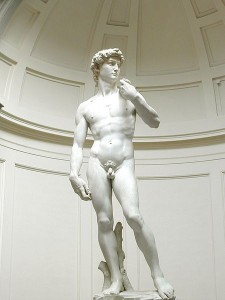How do we get great design? Most of us can recognize it, but creating it is another matter. I spend a lot of time thinking about product design: How can Apple come up with product after product that’s beloved by their users? Why does Microsoft have difficulty achieving the same? I think the key is in combination of two necessary components of greatness: mastery of technique and richness of ideation. Let me explain.
Consider art. What makes Picasso great? During his lifetime, the man was incredibly prolific. He worked in many different mediums from paint, to metal, to charcoal. He excelled at Analytical Cubism, easily surpassing Braques in both quantity and quality of work. Picasso borrowed from African art and from impressionists. He followed Matisse until Matisse’s students started to follow him. Picasso dived into an art form and explored with fury until he transformed it into something his own. He borrowed from everyone and bent it and molded it into a unique creation. Picasso was rich in ideation.
But ideation is not enough. What good is an idea when it lacks execution? Picasso was an art prodigy. He was able to draw amazingly mature life drawings at age fifteen that most of us would never have the skill to create. Picasso mastered technique at an early age, this mastery freed him to follow his imagination.
Having an idea for a painting and being able to execute the vision (as seen in one’s mind eye) are a world apart for most of us. It takes years to learn a skill, to teach the hands to capture in concrete form the musing of imagination. An architect without the technical know-how is not an architect. An engineer with a vision but without the engineering background is not an engineer. It takes both, ideation and deep expertise in a subject area, to create a great product.
Apple understands this. It seeks perfection in both the vision and its execution. John Gruber, http://daringfireball.net/, predicts that next week Apple will announce: “a new iPhone 4-caliber iPod Touch (retina display, dual FaceTime-ready cameras), new iTunes TV show rentals, and a new iOS-based Apple TV.” Let’s focus on just the dual FaceTime-ready cameras, for a moment. The ideation for this feature comes from the observation of current user behavior and a prediction of users’ desires and trends of use in a near future. People want to share not only what they see, but also how they feel about it via their facial expressions and other non-verbal communication of emotions and needs. The dual FaceTime-ready camera allows individuals to include emotional context into their communication.
But without great engineering and usability design, the idea of emotional context in communication has limited value. An iPad is an amazing device because of its great engineering as well as its conceptual ingenuity. It took both to succeed and inspire passion among its users. I bet Apple will deliver both the ideation and technological polish in its new iPod Touch.
Great design requires both, ideation and technique. Without technique, David would be a hunk of white marble, regardless of the majesty of ideas in Michelangelo’s head. Without encouraging ideation, Microsoft is doomed to trail behind Apple, dispassionately trying to replicate its rival’s ideas.

